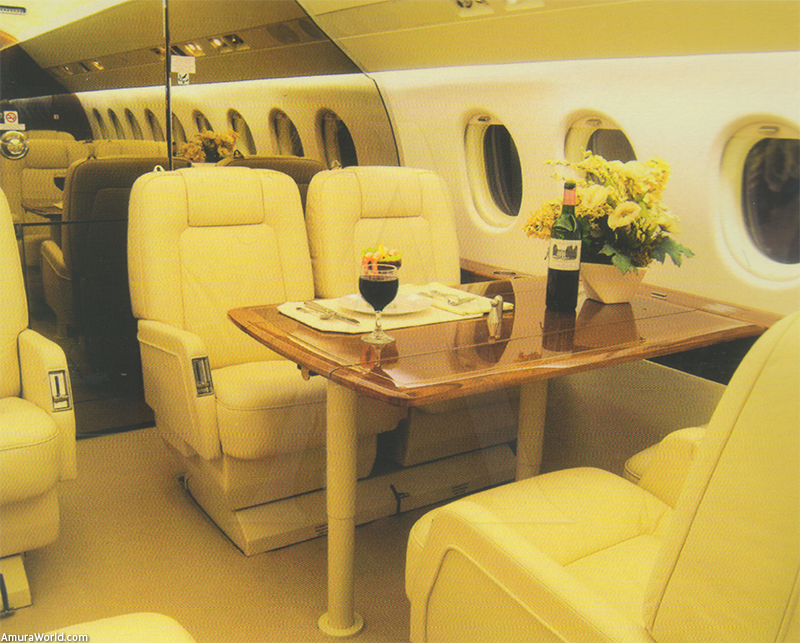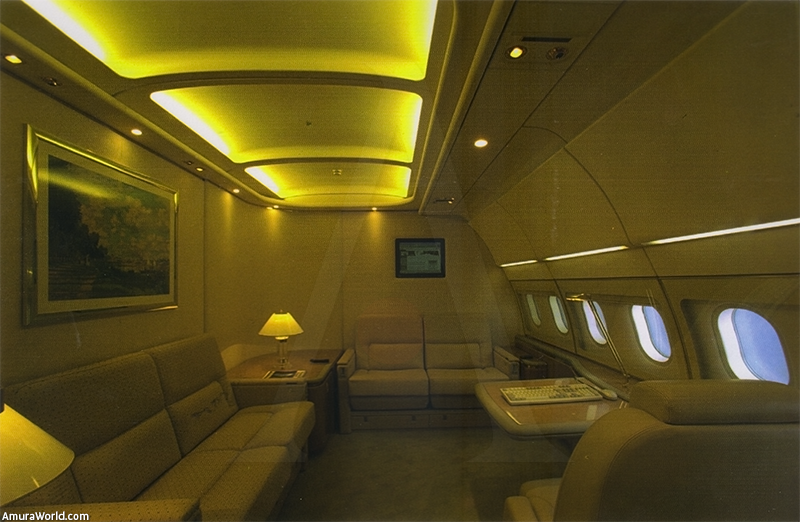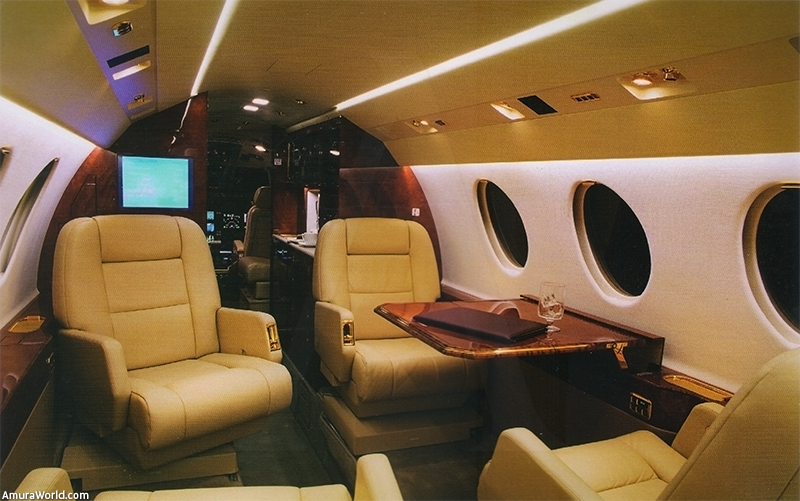Business jets come in a variety of sizes and models. The configurations vary: from the most luxurious, with meeting rooms, to those with private rooms for resting during a long flight and soft leather seats with multiple reclining options.
One example of the fact that owning a jet is a work necessity rather than a luxury, is golfer Tiger Woods, who turned pro in 1996. With his initial winnings (in the millions) his first investment was a private plane in which he could travel wherever he wanted whenever he wanted. He is seen frequently with his wife Elin and friends in Los Cabos, playing a quiet game on one of the courses there, without anyone knowing when he arrived, and even less, when he departed.
The two biggest airline plants, Boeing (BBJ) and Airbus (ACJ), make enormous corporate jets for companies that take their executives from one continent to another, with the huge advantage that it qualifies as a business expense and are, therefore, deductible. These virtual “flying” offices provide executives with all the facilities they need to be in contact with their main office at 14 000 feet in the air, especially now that Internet and cellular phones are about to be authorized for on board use.
Business jets (bizjet) have become the ideal means of transporting executives around the world, without having to depend on the timetables of commercial airlines.
The European company, Airbus, makes the A319, that, when used by commercial airlines, can transport 134 passengers but, in its bizjet version, carries up to 48 people, with a crew of four, and with a range of 5 200 nautical miles (nm). The US answer is the BBJ1, with a similar number of passengers, but with a range of 6 116 nm. This Seattle-base company, also has the BBJ2, with a range of 5 618 nm. Both models are mounted on a 737.
There are also smaller jets, like the Embraer Legacy, which is made by a Brazilian company that is ranked fourth in the world. It is an elegant office in the air, where luxury and comfort are found in every detail. With leather reclining seats and finishings in the finest woods, this Brazilian airplane, which has a range of 3 297 nautical miles, is ideal for 16 passengers and is a good option.
Other models of private jets are the AdamJet A700 (for four passengers). And, like a phoenix rising once again after surviving bankruptcy, AvCraft presents the Do329-310, with the wings mounted above the fuselage (for 12 passengers). Canada’s Bombardier makes the Learjet 40 (for seven passengers) with a range of 1 616 nm, and the Global 5000 (for 19 passengers) with a range of 4 800 nautical miles.
The US manufacturers of Cessna make not only prop planes, they also manufacture planes like the Citation Mustang (for four passengers) as well as the luxurious Citation X (for 12 passengers), with a range of 3 122 nm. The Gulfstream company sells the Gulfstream 100 (for nine passengers), the 550 (for 19 passengers), with a range of 6 706 nm, and other models, also for 19 passengers, but with a smaller range. Prices vary from 1 to 50 million dollars, depending (and a lot!) on the configuration and details that you want on board.
|
Microjet (5000 -10 000 POUNDS OF THRUST) Entry (10 000 - 13 000) Light (13 000 - 20 000) Light Medium (20 000 - 33 000) Medium (33 000 - 50 000) Long Range (50 000 - 80 000) Very Long Range (80 000 - 100 000) Bizliner (más de 100 000)
Source: Rolls-Royce |
Text: Laura Velázquez ± Photo: Aribus, Boeing, Falcon, Eclipse





